By Presleigh Johnson
Public History is everywhere. Whether it’s signs all over St. Augustine, reenactments, or surf culture exhibits, the Oldest City is a treasure trove of history. Being a Flagler College student is one of the best ways to learn about the St. Augustine community.
As an intern at the St. Augustine Historical Society, I was researching General Martin Hardin, a brigadier general who fought in the Union Army in the Civil War. He was a popular figure in the St. Augustine social scene in the late 1800s-early 1900s. To research, I sifted through The Tatler, a publication about the city.
Through The Tatler, I stumbled on stories I didn’t even know existed. That’s what I love about public history: the excitement of research and discovery.
On almost every page of The Tatler, I ran across amusing advertisements from St. Augustine shops. The ads were so entertaining—and sometimes laughable—that I knew I had to write a column about what you could buy in Gilded Age St. Augustine. So, let’s go on a little shopping trip.
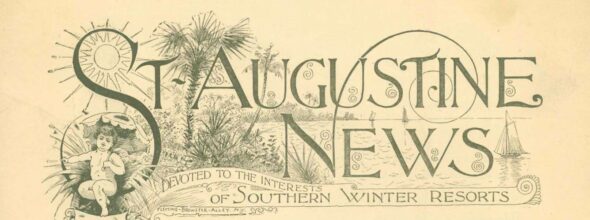
Before we start, here’s some context: The Tatler (officially called The Tatler of Society in Florida) was a gossipy publication that reported what was happening in St. Augustine and who was visiting during the winter season. The weekly newsletter included sections about other resorts too, connecting St. Augustine to the resort culture springing up in the South.
The Tatler recorded “Gossip Social and Personal” (one of their sections), descriptions of balls, lists of who arrived in each hotel, and more. Think of it as a Gilded Age social media with check-ins at hotels, reviews, vacation updates, and lots of ads.
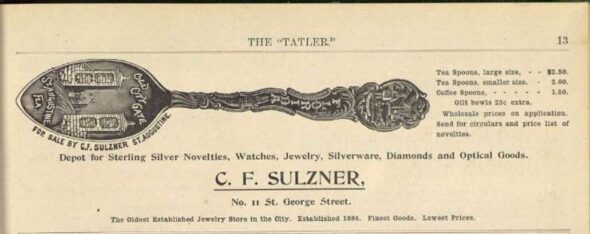
The ads—some subtle and others not so subtly placed—were often about shops in St. Augustine. They advertised the latest fashion from the North and exotic souvenirs you could take back home. Here are a few of the interesting ads I came across.
Greenleaf & Crosby’s St. Augustine location was in the courtyard of the Alcazar Hotel, Henry Flagler’s hotel and entertainment center (now the Lightner Museum). It sold jewelry, “Special Souvenirs,” and “Exclusive Designs.” Some of those souvenirs were “Teeth of Alligator and Wild Boar” as well as orange knives. I can’t think of anything more Floridian than alligator teeth and orange knives sold in the same place. They also imported “European Novelties” and “exclusively sold” corn stalks as decorations. (You read that correctly.)
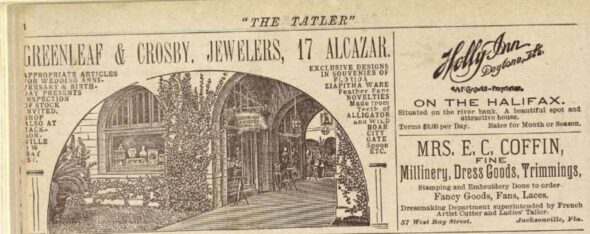
El Unico, another frequently advertised shop, was located in the Hotel Cordova building (now the Casa Monica Resort & Spa), just across the street from the Alcazar on the corner of King and Cordova Streets.

El Unico marketed just about everything sold in the shop, including “English Butter Scotch,” objects made from Florida woods, and “the newest novel as well more solid reading.” Buying candy, kitschy souvenirs, and a beach read on a vacation has, apparently, been a shopping habit for more than a hundred years.
H.W. Davis on King Street, now one of the longest operating business in St. Augustine, was a “Clothier, Haberdasher and Merchant Tailor” where “special attention [was] given to Cleaning, Pressing and Repairing.”
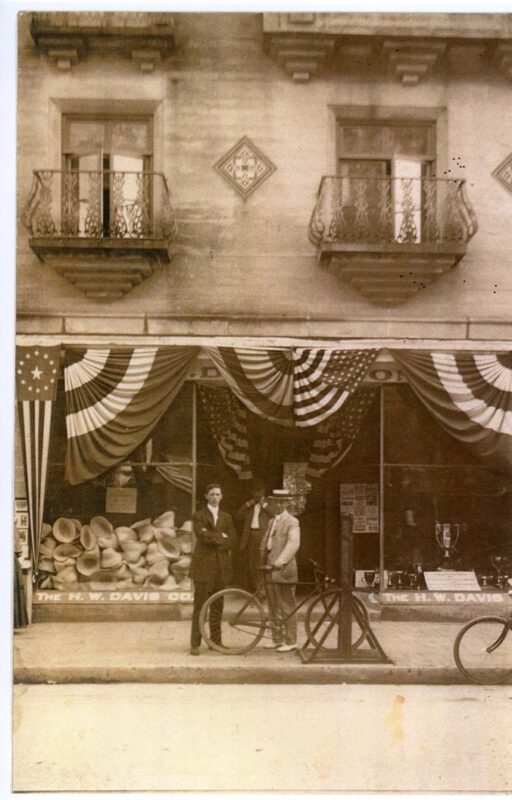
The Star Store, located near the Cathedral Basilica, was another shop mentioned in The Tatler. To name a few items, they sold umbrellas, which would have been a necessity, as well as needlework supplies.
Branching out of King Street, up the road opposite the Castillo de San Marcos (then called Fort Marion) was the Fort Marion Store that sold curiosities. Some honorable mentions include, “nine-foot alligator skins $2.75,” “Brass Door-knockers,” “Parchment Bound Books,” “Florida Birds’ Eggs,” and a host of other historically-related and equally disturbing items. The store promised that a souvenir would be “presented to every visitor.” I wish I knew what it was and I hope the answer isn’t lost to history.
Keeping with the historical theme, the Oldest House advertised that in addition to visiting the historic house museum, souvenirs were available to buy.
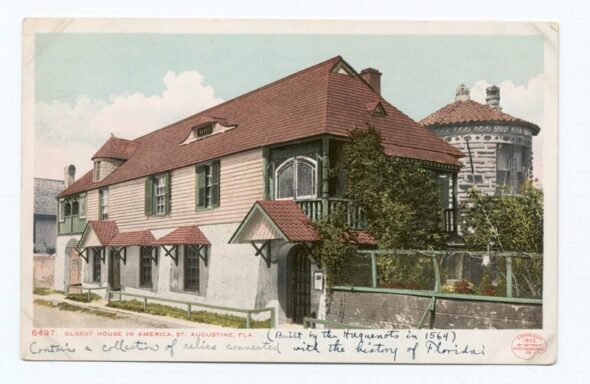
The ads speak to the need for entertainment during the winter season, which lasted approximately from January to April. Visitors were eager for sewing projects, books to read, and even needed their suits pressed during such a long vacation.
Most of these shops were contemporaries and competitors, often located just around the corner from each other, selling similar goods and advertising in the same publication. The writers behind the ads, though, were trying capture what they believed tourists wanted: mementos to remember sunny memories.
The Tatler’s ads are humorous for sure, but they remind us how little our world has changed. We can’t escape ads. They pop up on our social media, on YouTube when we try to start a video, or in magazines we flip through at the airport.
Ads inform public historians about consumer culture—what people were buying, what people were interested in, and what the ads teach us about the era. Over a hundred years ago, people were overwhelmed with ads in print media as they looked for the latest trends and objects that encapsulated their memories.
When you read these ads, it’s easy to get caught up in the fluffy Victorian frill of the wording, but remember, they were intended for Florida tourists looking for goods that met needs or reminded them of a trip they knew would eventually end.
History is about more than just Civil War brigadier generals—it’s the story of shop-owners, vacationers, locals; it’s what we remember and why our memories matter.
To learn more about the St. Augustine Historical Society’s collection, click here.




Be the first to comment on "The Shops Around the Corner"